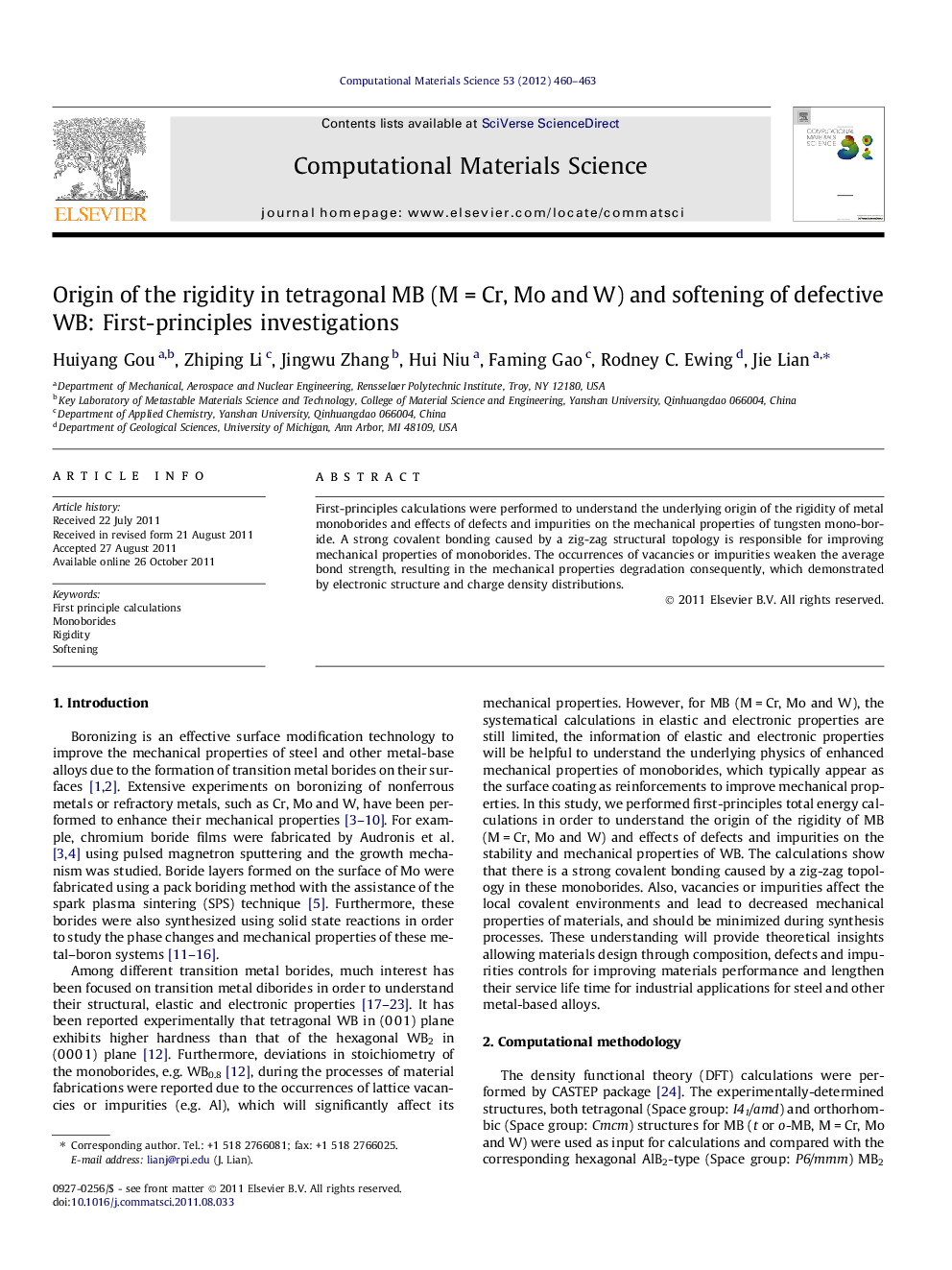| Article ID | Journal | Published Year | Pages | File Type |
|---|---|---|---|---|
| 1561924 | Computational Materials Science | 2012 | 4 Pages |
First-principles calculations were performed to understand the underlying origin of the rigidity of metal monoborides and effects of defects and impurities on the mechanical properties of tungsten mono-boride. A strong covalent bonding caused by a zig-zag structural topology is responsible for improving mechanical properties of monoborides. The occurrences of vacancies or impurities weaken the average bond strength, resulting in the mechanical properties degradation consequently, which demonstrated by electronic structure and charge density distributions.
► Metal monoborides have more negative formation energy (except CrB) and higher bulk modulus and shear modulus than diborides. ► The tetragonal phase for MB is energetically favorable as compared with the orthorhombic phase. ► A zig-zag covalent topology in both B–B and M–B bonds helps the improvement of hardness and wear resistance of the metal monoborides. ► Vacancies or impurities in WB weakens the average bond strength and thus decreases the mechanical properties.
